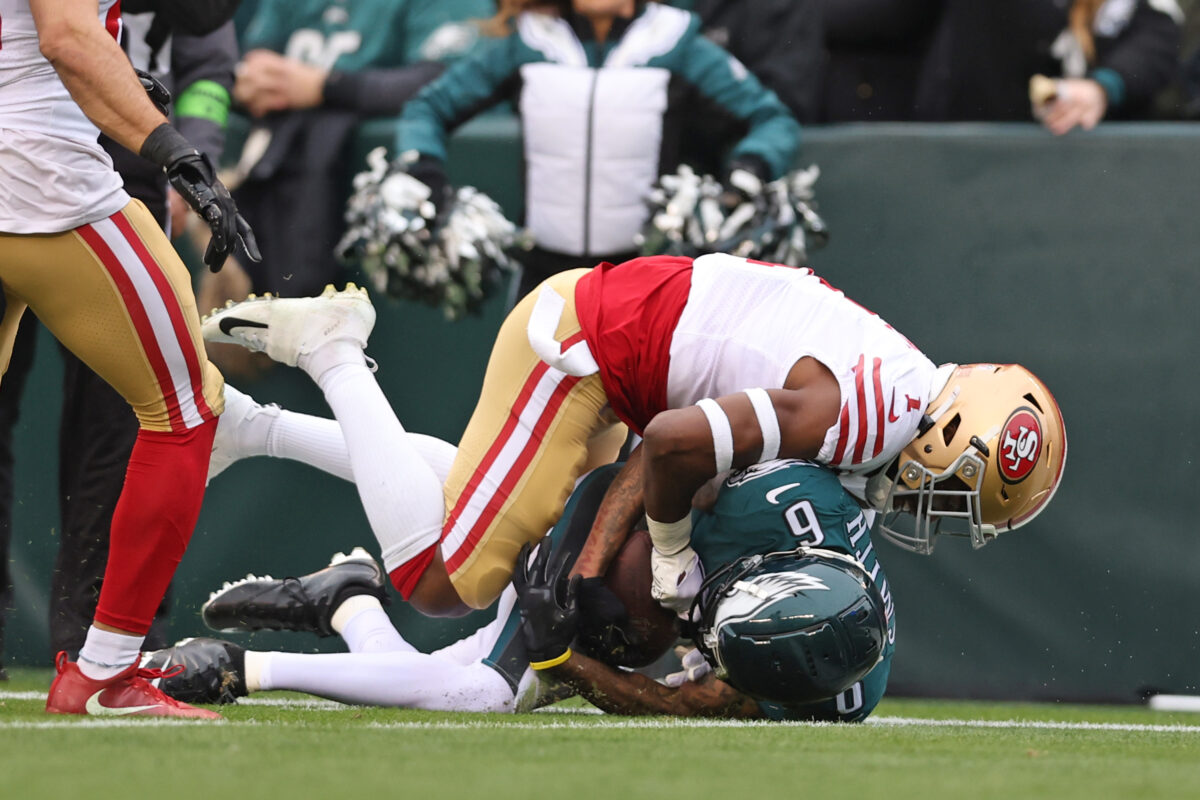Welcome to Layup Lines, For the Win’s basketball newsletter. Subscribe here to get it delivered to your inbox every Monday, Wednesday and Friday. Have feedback for the Layup Lines Crew? Leave your questions, comments and concerns through this brief reader survey. Now, here’s Prince J. Grimes.
The NBA’s Board of Governors met this week, and the biggest headline to come out of it was that the league isn’t quite ready for expansion, as commissioner Adam Silver stated at his board of governors press conference.
One under-the-radar thing to come out of the meeting, though, was the governors’ approval of an expansion to the use of a Coach’s Challenge when reviewing out-of-bounds violations.
The new rule will go into effect this upcoming season and will allow officials to review whether a foul near the out-of-bounds play should have been called.
An example provided by the NBA was a challenge by the Dallas Mavericks in the Western Conference Finals on a ball that went out of bounds off Minnesota Timberwolves forward Jaden McDaniels after he was hit on the arm by Kyrie Irving. The Mavericks won the challenge and were awarded possession. Under the new rule, officials would have been able to instead call a foul on Irving.
This is the example the NBA gave:
Kyrie Irving was able to get away with a foul on this play with Jaden McDaniels.
Now, if the play is challenged by a coach, officials can go back and assess a foul after the fact if it is deemed one.pic.twitter.com/FqCNpleNh9 https://t.co/jVZFPCtHy2
— Tomer Azarly (@TomerAzarly) September 10, 2024
This was a smart tweak to the rule and almost surprising it didn’t already exist. It eliminates the frustration of having to live with obvious fouls that officials couldn’t call retroactively. It also adds another element of getting things right without adding any of the extra time to a game that so many replay rules tend to add.
If anything, this rule could actually cut down on replay in certain instances. Coach’s may be hesitant to review some out-of-bounds violations if there’s a chance it backfires and ends with one of their players being assessed a foul.
What’s the hold on expansion?

Back to the topic of expansion, Adam Silver said it wasn’t discussed much at the Board of Governors meeting because the league isn’t ready for it yet.
This was somewhat surprising to hear considering all the talk we’ve heard over the years of the NBA potentially opening shop in Las Vegas or getting a team back in Seattle. My colleague Mike Sykes wondered in today’s edition of The Morning Win, what’s the holdup?
“It sounds like the NBA is pressing the pause button on expansion for now. But you’ve got to wonder what the hold-up is here. The table is perfectly set. There’s so much talent around the league. The cash is flowing. Now is the time. It’s a peculiar decision not to at least begin to move forward.
Maybe it’s because the NBA isn’t quite settled with the television deal yet. With Warner Bros. Discovery suing the NBA, all the ducks aren’t quite in a row with that just yet.
Or maybe the league is waiting on LeBron James to retire. He did say he wanted to own a franchise eventually and has been eyeing Las Vegas as his start. Could there be an under-the-table handshake to keep things paused while James finishes out his career? I have no idea.
Regardless, we’re stuck here playing the waiting game. I guess we’ll see when the time comes.”
If you aren’t subscribed to The Morning Win, do it now for more of that from Sykes and the FTW team.
Shootaround
— Mazzulla also credited the Pacers for pushing the Celtics the most during their title run
— Caitlin Clark calling A’ja Wilson unguardable put to bed any WNBA MVP debate







